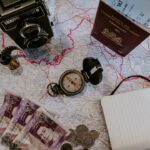List of packing for travelling: Amazing 2025
Why a Comprehensive List of Packing for Travelling Saves Your Trip
A list of packing for travelling is your roadmap to a stress-free adventure. Forgetting essential items is a common travel mishap, but with a solid checklist, most packing problems are preventable.
Quick Answer: Essential Travel Packing Categories
- Documents & Finances: Passport, visa, boarding passes, credit cards, local currency.
- Toiletries & Health: TSA-compliant liquids, medications, first-aid kit, sunscreen.
- Electronics: Smartphone, chargers, power adapter, portable battery, headphones.
- Clothing: Weather-appropriate outfits, underwear, comfortable shoes, versatile layers.
- Miscellaneous: Luggage locks, reusable water bottle, packing cubes, travel pillow.
Whether you’re heading to a beach resort or exploring European cities, the right packing list eliminates guesswork. It helps you avoid overpacking, ensures you have what you need, and provides peace of mind. The key is to start with universal essentials and then customize based on your destination, activities, and trip length. This strategy helps you pack lighter, stay organized, and worry less.
I’m Ramy Saber, founder of GoTravelHunt. After years of helping travelers streamline their trip preparation, I’ve learned that a well-organized list of packing for travelling is the foundation of every successful journey.
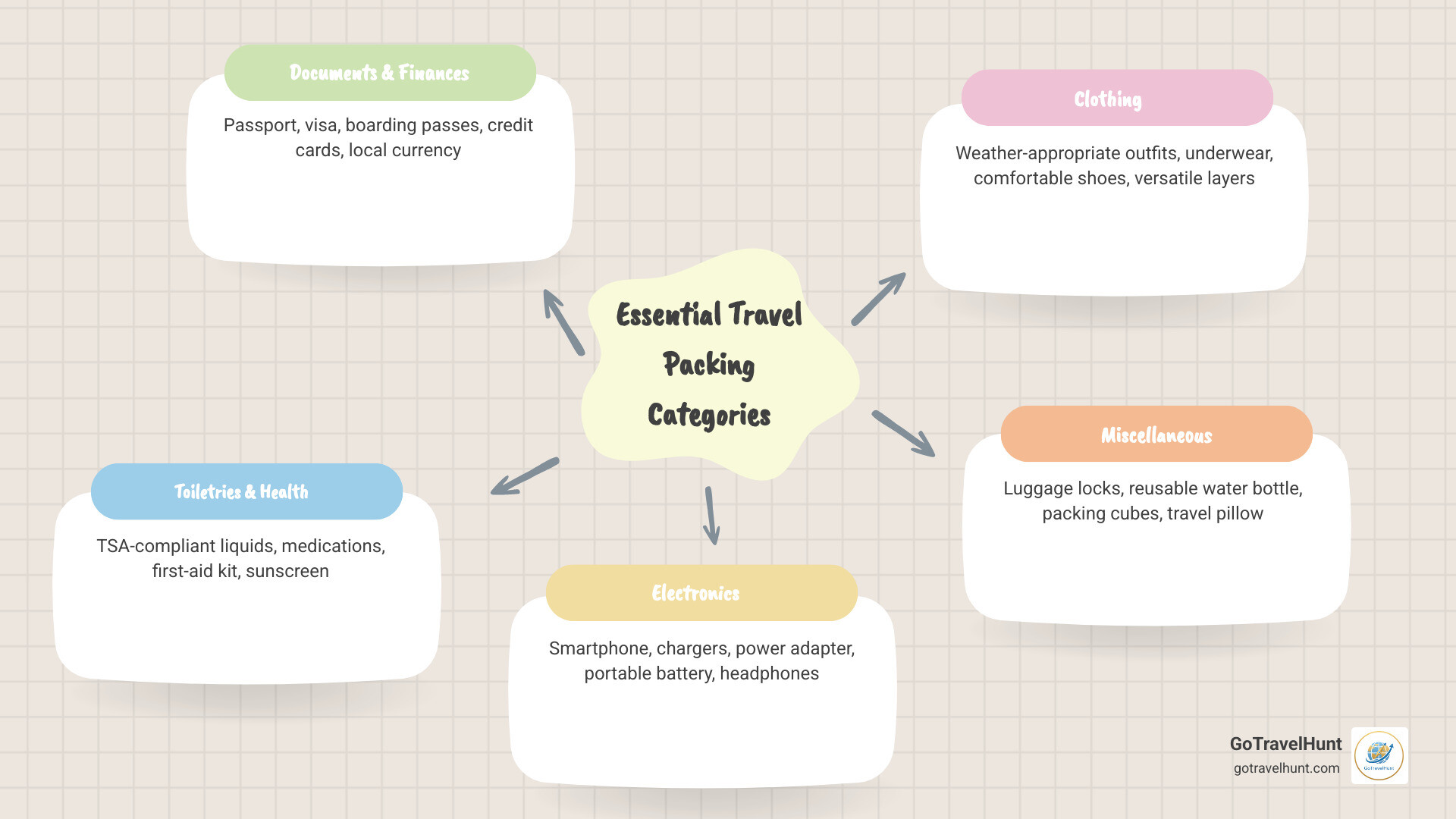
The Core Essentials: Your Universal Packing Checklist
No matter your destination, certain items belong on every list of packing for travelling. These non-negotiables are the foundation you’ll build upon for your specific trip. Getting these basics right ensures you can handle the practical side of travel, from crossing borders to staying comfortable on the road.
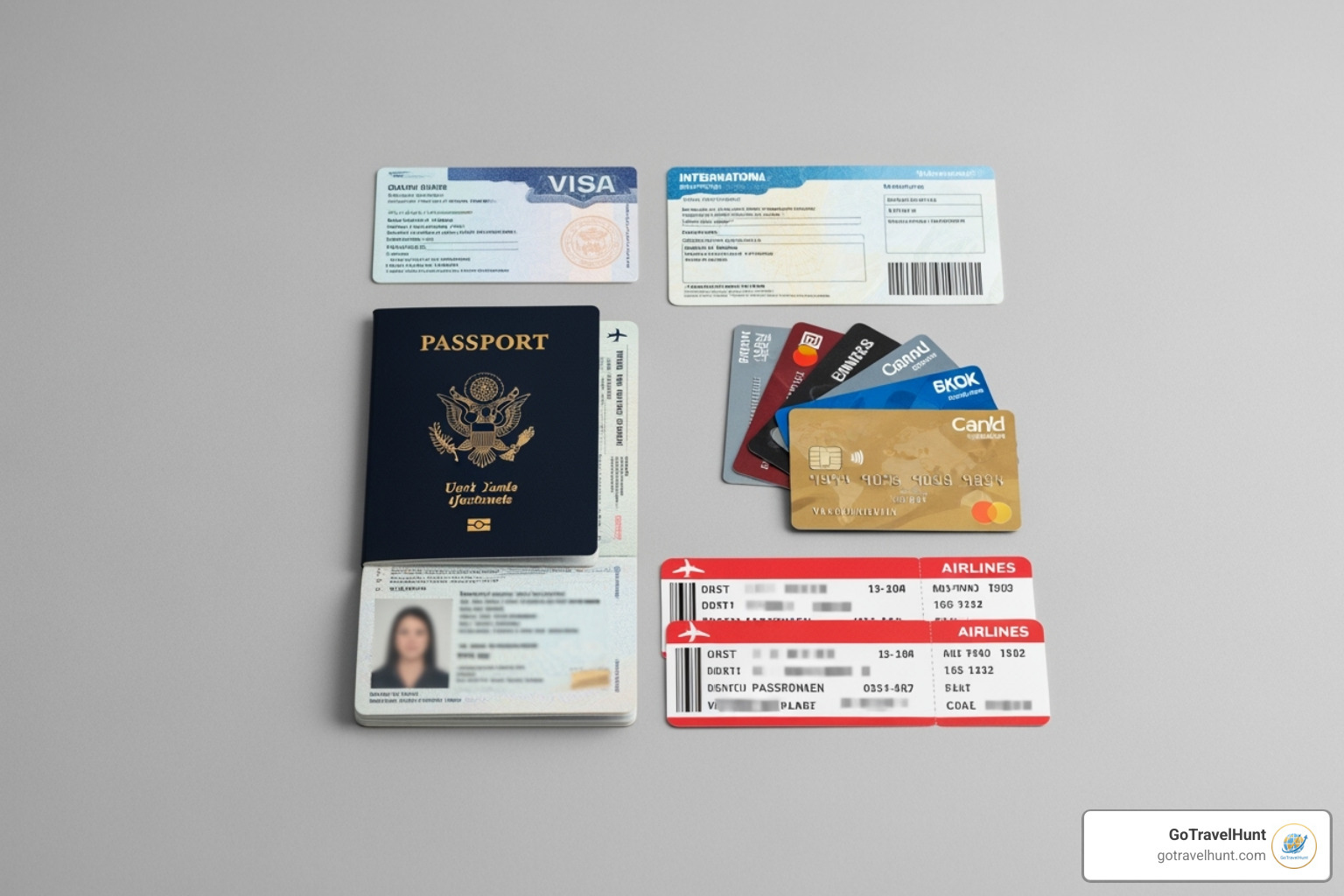
The Ultimate List of Packing for Travelling: Documents & Finances
Your travel documents are your lifeline. For international travel, ensure your Passport or ID is valid for at least six months beyond your return date, as many countries enforce this rule. Check if you need a visa well in advance using resources like the U.S. Department of State’s website to check visa requirements by country here. Make digital and physical copies of all important documents, keeping them separate from the originals. If your passport is lost or stolen, these copies will be invaluable.
Keep your itinerary, boarding passes, and hotel confirmations accessible. While they’re on your phone, a printed copy is a great backup if your battery dies. For money, bring at least two credit cards and a debit card. Keep them in separate places and, crucially, notify your bank of your travel plans to avoid frozen accounts. Have some local currency for immediate expenses upon arrival and tuck away emergency cash in a secure spot like a money belt.
Essential Toiletries & Health Items
Packing toiletries requires following the TSA 3-1-1 rule for carry-ons: liquids must be in containers of 3.4 ounces (100ml) or less, all fitting in one quart-sized clear bag. Use quality travel-sized containers or magnetic leakproof capsules to prevent spills.
Your health kit should include a basic first-aid kit with bandages and antiseptic wipes. Pack prescription medications in your carry-on in their original packaging. Bring a copy of the prescription for international travel. Sunscreen is a must, and if you’re visiting destinations with coral reefs, choose a reef-safe formula. Also pack insect repellent for tropical or outdoor trips and hand sanitizer for when soap and water aren’t available.
Don’t forget basics like a toothbrush, toothpaste, deodorant, shampoo, and conditioner. Solid toiletries are a great space-saving, liquid-free alternative.
Must-Have Electronics for the Modern Traveler
Your smartphone is essential, but it needs support. A portable charger is non-negotiable to keep your phone powered for navigation and communication. For international trips, a universal power adapter is a must-have for different outlet shapes. Most modern electronics are dual-voltage, but always check the label. Noise-canceling headphones are a lifesaver on long journeys.
For high-quality photos, consider a dedicated camera with extra batteries. An e-reader like a Kindle saves space compared to physical books. Finally, double-check you have chargers for all devices, and keep them organized in a zipper pouch. For international data, an eSIM is an easy way to stay connected without high roaming fees.
Customizing Your List of Packing for Travelling
While the core essentials are a great start, smart packing means tailoring your list of packing for travelling to your specific adventure. Consider your trip type, destination climate, trip duration, and planned activities to fine-tune your list.
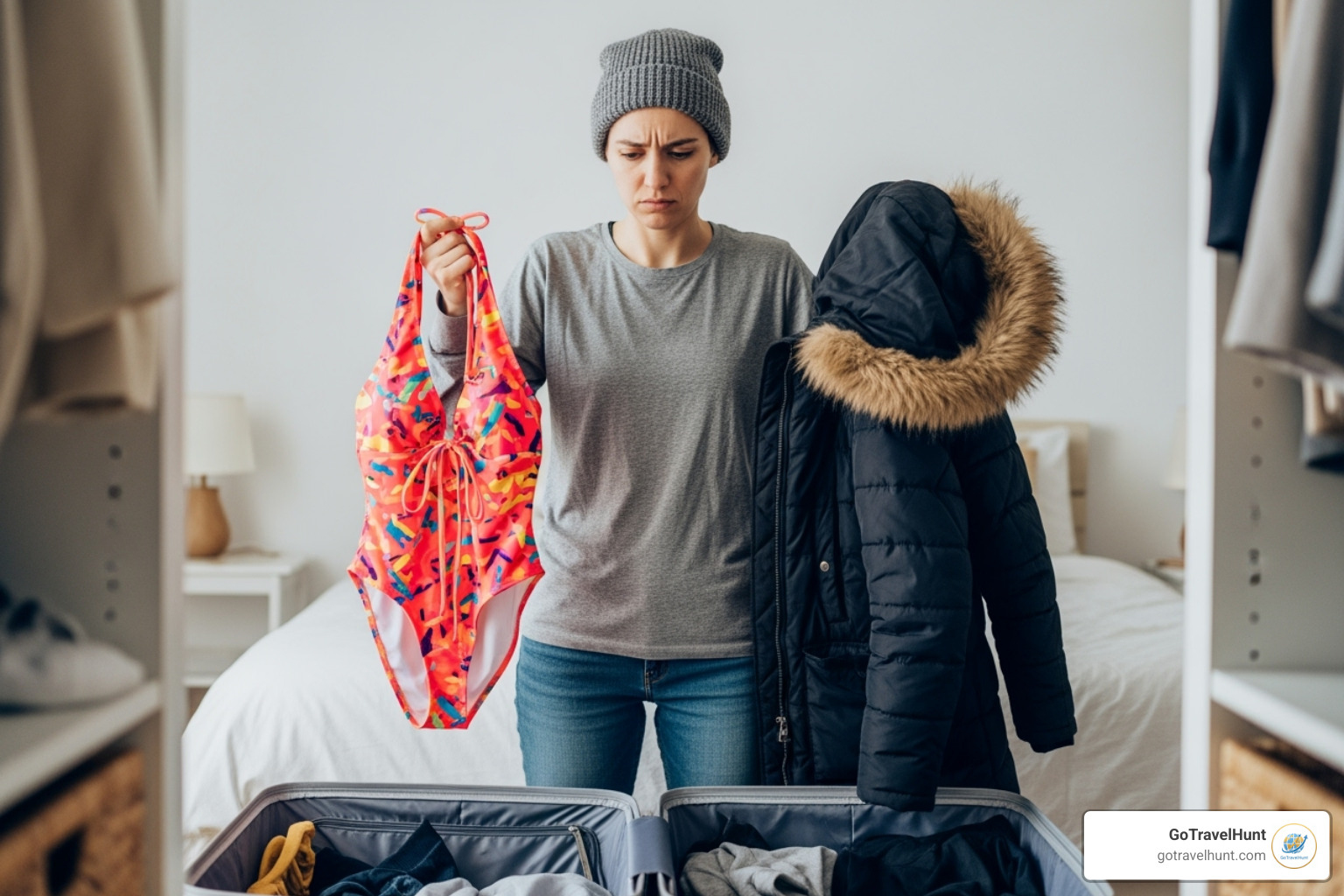
How to Pack for Your Trip Type
Your travel style dictates your packing list. Here’s a quick guide:
- Beach Vacation: Focus on comfort and sun protection. Pack a swimsuit or two, reef-safe sunscreen, a cover-up, sandals, and a wide-brimmed hat.
- City Break: Prepare for walking and sightseeing with comfortable walking shoes, a versatile dressy outfit for evenings, and a secure crossbody bag. For more ideas, see our City Break Packing List.
- Adventure Travel: This requires rugged gear. Think sturdy hiking boots, moisture-wicking clothes, and a reliable daypack for excursions.
Adapting Your List of Packing for Travelling by Season
Always check the weather forecast before you leave. The golden rule for any climate is to pack layers you can add or remove as temperatures change. Sticking to neutral colors for main clothing items allows you to mix-and-match easily, creating more outfits with fewer pieces.
For warm climates, choose light, breathable fabrics like cotton and linen. For cold climates, focus on warmth with thermal layers, wool socks, sweaters, a warm coat, and accessories. For rainy seasons, a packable umbrella is a lifesaver.
Packing for Specific Activities
Consider any special activities you have planned, as they often require specific gear.
If you’re hiking, bring proper hiking gear. For swimming, pack at least two swimsuits and a cover-up. For a special evening, include one piece of formal dinner attire, like a nice dress or collared shirt. If you plan to work out, bring gym clothes. For winter sports, you’ll need specialized ski equipment.
Smart Packing Strategies: Pack Lighter & More Efficiently
Packing light is a game-changer that saves you money on baggage fees and makes travel more convenient. The average checked bag can cost $35 on domestic flights, an expense easily avoided. These strategies will help you save space and streamline your list of packing for travelling.
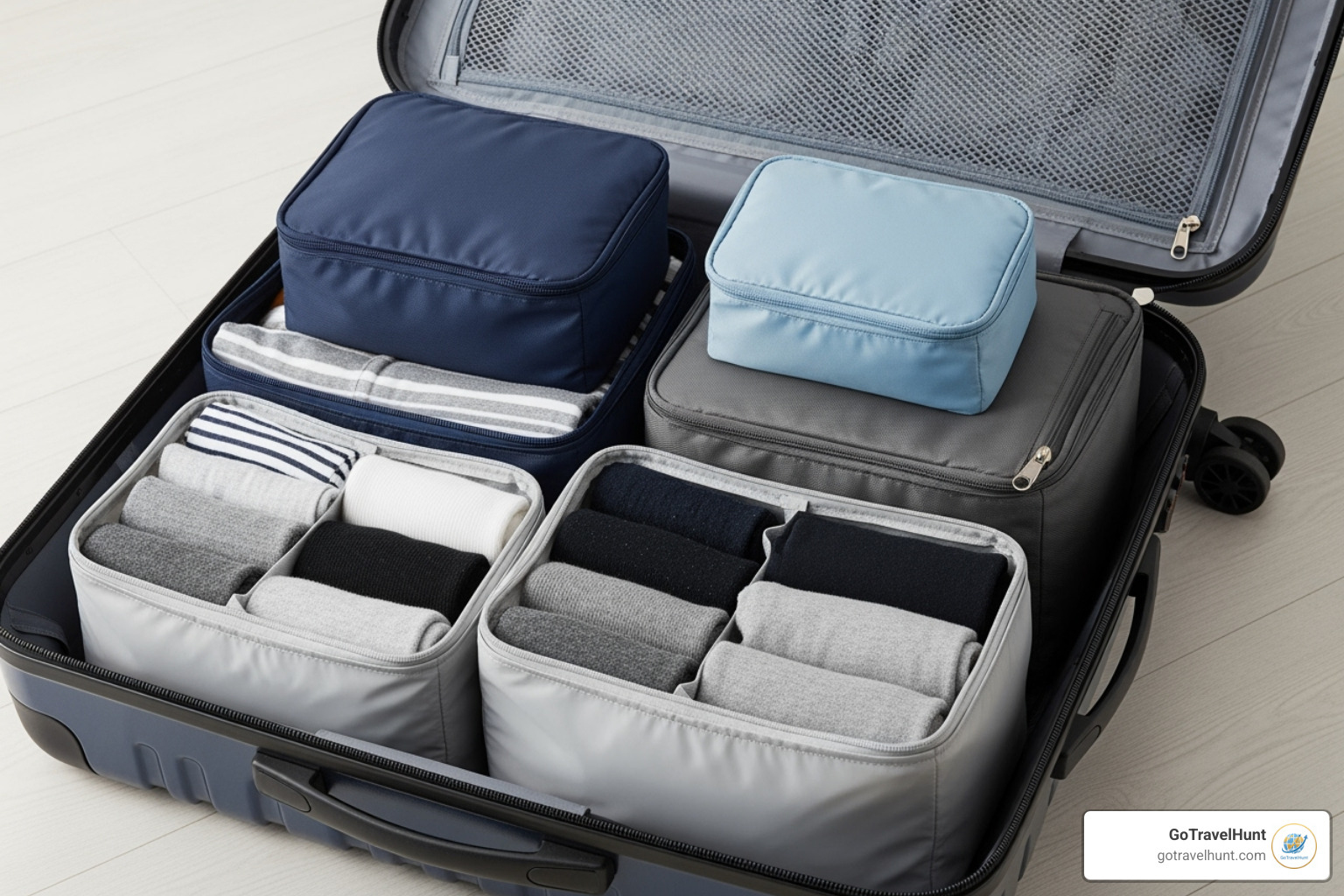
Carry-On vs. Checked Luggage: What Goes Where?
Deciding what to pack in your carry-on versus checked bag is crucial. The rule is simple: if you can’t live without it for a few days, it belongs in your carry-on.
Your carry-on essentials include valuables (jewelry, cash), important documents, and all medications. Travel insurance often won’t cover valuables in checked luggage. A change of clothes, including underwear and socks, is a lifesaver if your luggage is delayed. All electronics and chargers should also be in your carry-on for security and in-flight use. Finally, pack comfort items like a travel pillow, headphones, and a book or e-reader.
Checked bag items are your larger, less critical belongings like the bulk of your clothing and full-size toiletries. Be aware of prohibited items for carry-ons, such as sharp objects, which must be checked. We often travel with a carry-on roller and this travel backpack as our personal item.
The Magic of Packing Cubes and Rolling Clothes
Packing cubes are organizational tools that compress clothing and can save significant space. They allow you to categorize items by outfit or type, making it easy to find what you need without rummaging through your suitcase. This organization also helps minimize wrinkles and makes unpacking as simple as moving the cubes into a drawer. We are huge advocates for packing cubes to keep luggage tidy.
When it comes to rolling vs. folding, rolling is often superior for minimizing wrinkles and maximizing space, especially for soft items like t-shirts. For the best results, combine rolling your clothes with using packing cubes.
Common Packing Mistakes to Avoid
Even seasoned travelers make mistakes. Here are common pitfalls to avoid:
- Overpacking shoes: Shoes are bulky. Limit yourself to three pairs: one for walking (like these sneakers), one dressy option, and one activity-specific pair. Wear the bulkiest on the plane.
- Forgetting chargers: Double-check you have a charger for every electronic device. An electronics pouch helps keep them together.
- Ignoring weather forecasts: Check the forecast just before you leave and pack layers to adapt to changing conditions.
- Packing full-size toiletries: Stick to travel-sized containers to save space and weight, unless you’re on a very long trip and checking a bag.
- Not leaving room for souvenirs: If you plan to shop, leave some extra space or pack a collapsible tote.
- Not having a plan: Last-minute packing leads to stress and forgotten items. Use our Last Minute Packing List to avoid mistakes.
Final Preparations: Security & Home Checklist
Before you can relax on vacation, a few final steps are needed to secure your belongings and your home. This preparation provides peace of mind, allowing you to fully immerse yourself in your travels.
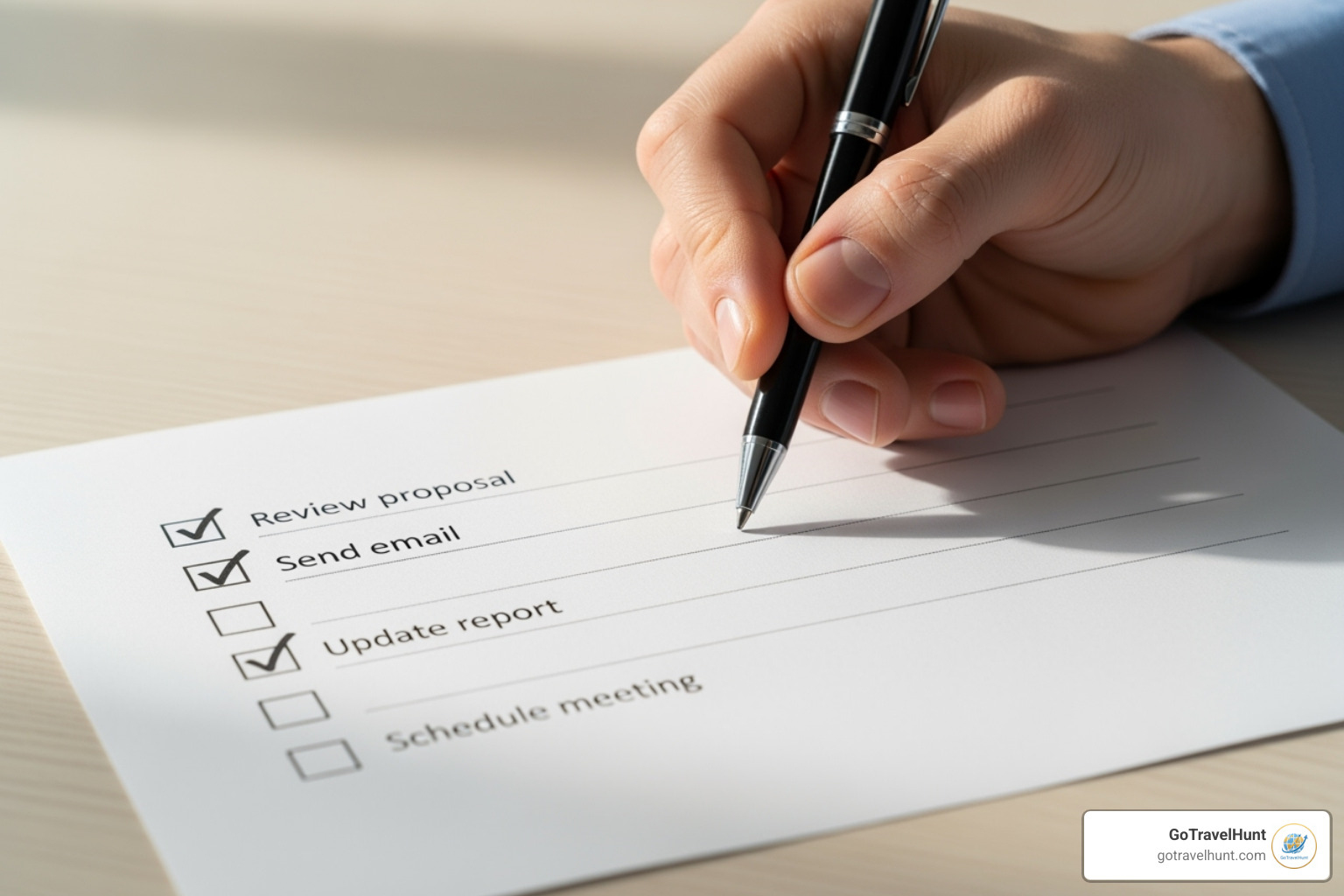
Keeping Your Belongings Safe on the Road
Smart security is key to keeping your valuables safe while exploring. Use luggage locks on checked bags as a deterrent. For your daypack, consider bags with lockable zippers or discreet money belts for your passport and extra cash. In busy areas, anti-theft bags or a crossbody bag with a zipper are smart choices, as they are harder for pickpockets to target.
Your ultimate safety net is travel insurance. It protects you against everything from illness and theft to trip cancellations. We always recommend getting coverage from a reputable provider for peace of mind. For your luggage, tracking devices like Apple AirTags can help you locate a lost bag. Also, practice good digital security by using strong passwords and being cautious on public Wi-Fi.
Pre-Departure Home Checklist
Preparing your home before you leave ensures everything is safe and sound. A quick checklist helps you relax on your trip.
- Unplug electronics to save energy and protect against power surges.
- Stop mail or deliveries to avoid a clear sign that no one is home. Ask a neighbor to help or place a hold with the post office.
- Inform a trusted neighbor you’ll be away and provide contact information.
- Arrange pet/plant care for your furry and leafy friends.
- Pay any bills that are due while you’re traveling to avoid late fees.
- Clean out the fridge to prevent returning to unpleasant odors.
- Secure your home by double-checking all windows and doors are locked. Consider light timers and leave a spare key with a trusted friend or family member.
This comprehensive approach to your list of packing for travelling preparations ensures you can enjoy your adventure. For a more detailed guide, you can Download our Home Checklist Here.
Frequently Asked Questions about Travel Packing
We’ve covered how to build the perfect list of packing for travelling, but you might still have questions. Here are answers to some of the most common inquiries.
What are the absolute must-haves for international travel?
Beyond the core essentials, international travel requires a few extra non-negotiable items. Your Passport and visas are critical; ensure your passport is valid for at least six months after your return date. Have some local currency on hand for immediate expenses. A power adapter/converter is crucial for charging electronics abroad. Keep both digital and physical copies of important documents separate from the originals. Finally, travel insurance is your safety net for unexpected medical issues or trip disruptions. For more details, see our guide on international travel packing.
How many outfits should I pack for a 7-day trip?
For a 7-day trip, aim for 4-5 mix-and-match outfits. The key is choosing versatile pieces where each top can go with multiple bottoms. A good starting point is 4-5 tops, 2-3 bottoms (like jeans or shorts), one dressy option for an evening out, and one swimsuit if needed. Pack enough underwear and socks for each day, plus an extra pair. If you’ll have access to laundry, you can pack even less. Packing for 7-10 days and doing laundry once is a great strategy for longer trips.
What’s the best way to pack liquids to avoid spills?
To prevent the dreaded toiletry spill, follow a few smart tricks. For carry-ons, stick to the TSA 3-1-1 rule with containers 3.4 oz (100ml) or less in a clear zip-top bag. Use quality TSA-friendly bottles to decant your products. For extra security, double-bag your liquids. A game-changer is using solid toiletries like shampoo bars and toothpaste tabs, which eliminate spill risk entirely. A pro tip: place a small piece of plastic wrap over the opening of a bottle before screwing the cap on tightly to create an extra seal. Specialized containers like magnetic leakproof capsules also offer great protection.
Your Adventure Awaits: Pack with Confidence
You’ve now learned how to create the perfect list of packing for travelling. This well-thought-out list is your ticket to a journey free from stress and full of joy. By starting with core essentials and customizing for your unique adventure, you’re setting yourself up for success.
At GoTravelHunt, we believe travel planning should be as exciting as the trip itself. With the right preparation, you can leave the stress behind and focus on what truly matters: making incredible memories. Take a deep breath, know you’re ready, and get packing for an unforgettable adventure!





